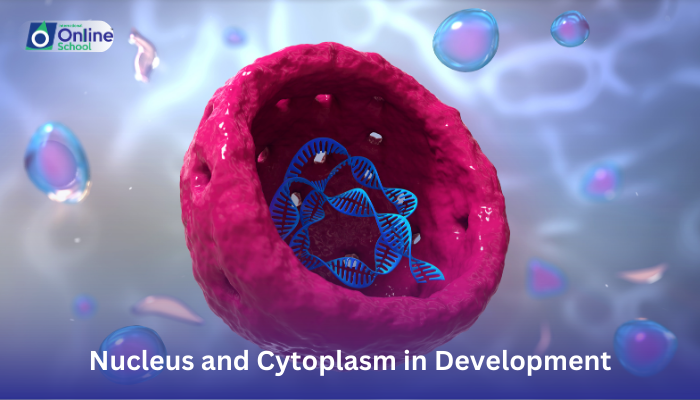
Learning Outcomes:
i. Describe the roles of the nucleus and cytoplasm in early embryonic development.
ii. Understand the concept of differential gene expression and its impact on cell differentiation.
iii. Explore the interplay between nuclear and cytoplasmic factors in regulating developmental pathways.
iv. Appreciate the intricate dance between these cellular components that orchestrates the formation of diverse cell types.
Introduction:
Imagine a grand orchestra, each instrument contributing to the composition of a magnificent symphony. In the early stages of life, the nucleus and cytoplasm play a similar duet, their harmonious collaboration dictating the development of diverse cell types within the embryo. In this lesson, we'll delve into the backstage of this cellular performance, witnessing the crucial roles these two components play in shaping the future of the organism.
i. The Nucleus: The Master Conductor
Think of the nucleus as the orchestra's conductor, holding the blueprint for the entire composition. Within its walls reside the chromosomes, tightly packed strands of DNA containing the genetic instructions for every cell in the body. These instructions are in the form of genes, and the nucleus controls which genes are "played" in each cell, determining its fate and function.
ii. Differential Gene Expression: The Notes of Identity
Not all cells in the embryo play the same notes. The nucleus, through a complex process called differential gene expression, determines which genes are activated and deactivated in each cell. This selective activation creates a symphony of diversity, with each cell expressing a unique set of genes that define its identity and function.
iii. The Cytoplasm: The Responsive Instrument
While the nucleus conducts, the cytoplasm acts as the responsive instrument. It houses ribosomes, the cellular factories that translate the genetic instructions from the nucleus into proteins, the building blocks of cells and tissues. The specific proteins produced by each cell, determined by the genes activated in its nucleus, give it its unique characteristics and functions.
iv. The Intertwined Dance: A Feedback Loop for Development
The relationship between nucleus and cytoplasm is not a one-way street; it's a dynamic feedback loop. The proteins produced in the cytoplasm can travel back to the nucleus, influencing which genes are activated or silenced. This feedback loop helps to fine-tune development, ensuring that each cell receives the precise instructions it needs to fulfill its role in the organism.
v. From Duet to Diversity: The Symphony of Life Unfolds
Through this intricate interplay, the nucleus and cytoplasm orchestrate the development of diverse cell types:
Muscle cells express genes for contractile proteins, enabling them to move.
Nerve cells activate genes for receptors and neurotransmitters, allowing them to transmit signals.
Skin cells produce keratin, providing a protective barrier.
vi. A Journey of Orchestration: From Single Cell to Complex Organism
By understanding the roles of the nucleus and cytoplasm in early development, we gain a deeper appreciation for the incredible complexity of life. This orchestrated symphony of gene expression, cellular interactions, and feedback loops is what transforms a single fertilized egg into the intricate tapestry of tissues and organs that define a living being.
The nucleus and cytoplasm, though seemingly separate entities, are partners in a magnificent dance that shapes our very existence. Their harmonious collaboration orchestrates the development of diverse cell types, laying the foundation for the complex and functional organism we become. As we continue to explore the intricacies of development, we remember that within each cell, a symphony of life unfolds, a testament to the awe-inspiring power of nature's grand design.